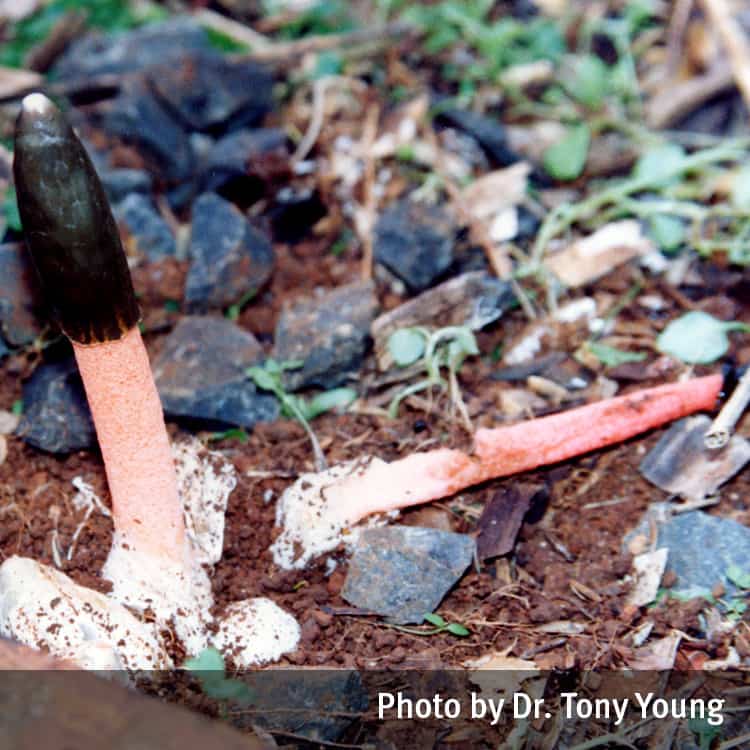Description
These fungi produce a dark brown to black slime containing spores on their surface, which has an intense smell of rotting meat or sewage.
They are very common on wood or bark-chip mulch in gardens, and on deep litter on the rainforest floor. There are a number of differently shaped species, but all are readily recognisable by the smell of the spore slime.
Toxicity
Symptoms
Currently, genera within the morphological group referred to as ‘stinkhorns’ are not considered to be toxic. No human fatalities have been recorded as resulting from consumption of members of this group. There is unpublished anecdotal veterinary evidence that suggests that, at least in some dogs, stinkhorn fungi will cause symptoms including those associated with gastric irritation and nervous system impairment.
Images

Details
Common name: Stinkhorn fungi
Botanical name: Aseroe rubra, Phallus rubicundus and others
General description: These fungi produce a dark brown to black slime containing spores on their surface, which has an intense smell of rotting meat or sewage. They are very common on wood or bark-chip mulch in gardens, and on deep litter on the rainforest floor. There are a number of differently shaped species, but all are readily recognisable by the smell of the spore slime.